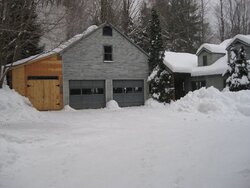Hello All
I am new to the site and am in the process of determining the best gassifier set up for my application and user preferences. I was hoping to get some feedback regarding the placement of a Garn 2000 in a basement. My major concern is residual heat coming off the unit during the shoulder months and in the summer when firing for DHW. Could a well insulated basement Garn room with a well insulated Garn solve this issue?
Any advise would be greatly appreciated.
Thanks
I am new to the site and am in the process of determining the best gassifier set up for my application and user preferences. I was hoping to get some feedback regarding the placement of a Garn 2000 in a basement. My major concern is residual heat coming off the unit during the shoulder months and in the summer when firing for DHW. Could a well insulated basement Garn room with a well insulated Garn solve this issue?
Any advise would be greatly appreciated.
Thanks


